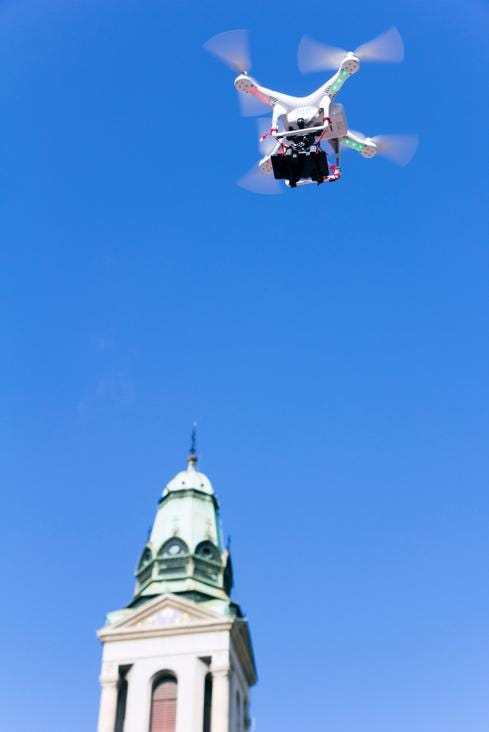Sony Drone Venture Targets IoTSony Drone Venture Targets IoT
By entering the drone business in a joint venture with Aerosense, Sony aims to expand its involvement with cloud services and the Internet of Things.


Drones: 10 Novel Uses For Your City
Drones: 10 Novel Uses For Your City (Click image for larger view and slideshow.)
Sony Mobile and ZMP, a Japanese robotics company, are planning to work together to develop drones for businesses.
Next month, the two companies said, they'll form a joint venture called Aerosense that will lease unmanned aerial vehicles to enterprises for applications that require aerial imagery.
Sony said Aerosense reflects its effort to develop new business opportunities, particularly those related to the Internet of Things. The company said it intends to add value for its customers by developing and managing cloud services related to its drone-based data gathering.
Aerosense will employ imaging, sensing, telecommunications, networking, and robotics technology from Sony Mobile, alongside autonomous navigation and robotics technology from ZMP. The jointly owned firm intends to develop systems capable of aerial reconnaissance.
Aerial image acquisition was the first commercial job for drones. The first FAA-approved commercial drone flight over the US was conducted in Alaska last June on behalf of energy services company BP. Then in September the FAA granted six movie production companies the right to fly drones for aerial cinematography.
But drones are also being looked at for the transport of goods and signals. Amazon, Facebook, and Google have been testing drones as delivery vehicles and network signal relays. Last week, the Mid-Atlantic Aviation Partnership and Virginia Tech conducted a FAA-authorized test to deliver medicine via drone. And there have been numerous reports of drones being used to fly contraband across borders and into restricted areas such as prisons.
[ Drones can be fun. Watch Chris Anderson: Making Drones And Weaponizing Legos. ]
The next frontier for drones is drone countermeasures. In response to the growing list of unauthorized or unwanted drone incursions, a California lawmaker introduced legislation to allow first responders to down drones. The US Army's Extended Area Protection and Survivability program, or EAPS, has been expanded to cover shooting down small aircraft. In France, UK-based Blighter Surveillance Systems recently tested its anti-drone radar system. And Washington, DC-based DroneShield has been selling net launchers that can capture nearby drones.
Drones pose a problem for regulators because these vehicles have challenged some basic assumptions about aviation. Until a few years ago, most commercial aviation was expensive because planes had to be big enough to carry people. Cost and size limited the number of planes in the national airspace.
Thanks to advances in miniaturization, computation, networking, and other technologies, unmanned aerial vehicles have become inexpensive and widely available. Having more drones aloft raises the risk of collisions with aircraft and with people or property on the ground. The malicious potential of drones as autonomous weapons further complicates matters for companies, such as Sony, that seek to provide drones for business applications.
The FAA is dealing with commercial drones on a case-by-case basis. The agency is expected to issue revised rules by next summer.
About the Author
You May Also Like






